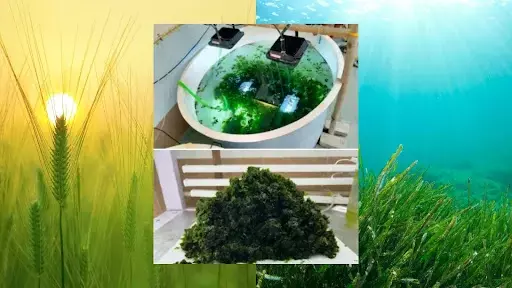
Tomorrow’s Superfood from the Sea
Imagine a future where our plates are filled with “tomorrow’s wheat of the sea”. What if we could tap into the vast potential of the ocean to produce a sustainable and nutritious food source that can help address global food demands and diversify our diets? Enter Ulva, a green seaweed that is poised to revolutionize the way we think about food production.
Ulva, a type of green algae, is a nutritional powerhouse that is rich in protein and carbohydrates. Its incredible productivity means that more food can be grown in less space, making it an attractive solution to the global food challenge. With the world’s population projected to reach 9.7 billion by 2050, finding ways to increase food production while minimizing the environmental impact is crucial.
The benefits of Ulva are multifaceted. Not only does it offer a high-value marine feedstock, but it also has the potential to reduce the pressure on land-based agriculture. With the world’s arable land already under cultivation, finding alternative sources of food is essential. Ulva can be grown in shallow coastal waters, making it an ideal solution for regions with limited arable land.
But what makes Ulva such a promising superfood? For starters, it is an excellent source of protein, making it an attractive option for vegetarians and vegans. It is also rich in fiber, vitamins, and minerals, making it a nutritious addition to a variety of dishes. Moreover, Ulva is low in calories and high in antioxidants, making it an excellent choice for those looking to maintain a healthy diet.
One of the most exciting aspects of Ulva is its incredible productivity. Unlike traditional crops, which require large amounts of land, water, and fertilizers, Ulva can be grown in shallow coastal waters using minimal resources. This makes it an attractive option for regions with limited arable land or water resources.
In addition to its nutritional benefits and high productivity, Ulva is also an environmentally friendly option. Unlike traditional agriculture, which can lead to soil erosion, water pollution, and loss of biodiversity, Ulva cultivation is a low-impact activity that can actually help to improve water quality and support marine ecosystems.
So, how is Ulva cultivated? The process is surprisingly simple. Ulva is typically grown in shallow coastal waters using a specialized system that involves seeding the seaweed in a controlled environment. The seaweed is then allowed to grow and mature, before being harvested and processed into a variety of products, including food, animal feed, and biofuels.
The potential applications of Ulva are vast. It can be used as a food ingredient, adding protein and fiber to a variety of dishes. It can also be used as an animal feedstock, providing a nutritious and sustainable alternative to traditional feed sources. Additionally, Ulva can be used to produce biofuels, providing a renewable and sustainable source of energy.
As the world grapples with the challenges of feeding a growing population, Ulva is an exciting and innovative solution that offers a sustainable and nutritious way to address global food demands. With its incredible productivity, nutritional benefits, and environmental sustainability, Ulva is poised to become the “wheat of the sea”, revolutionizing the way we think about food production and diversifying our diets with a high-value marine feedstock.
News Source:
https://researchmatters.in/news/cultivating-sea-how-ulva-green-seaweed-offers-land-saving-food-revolution






